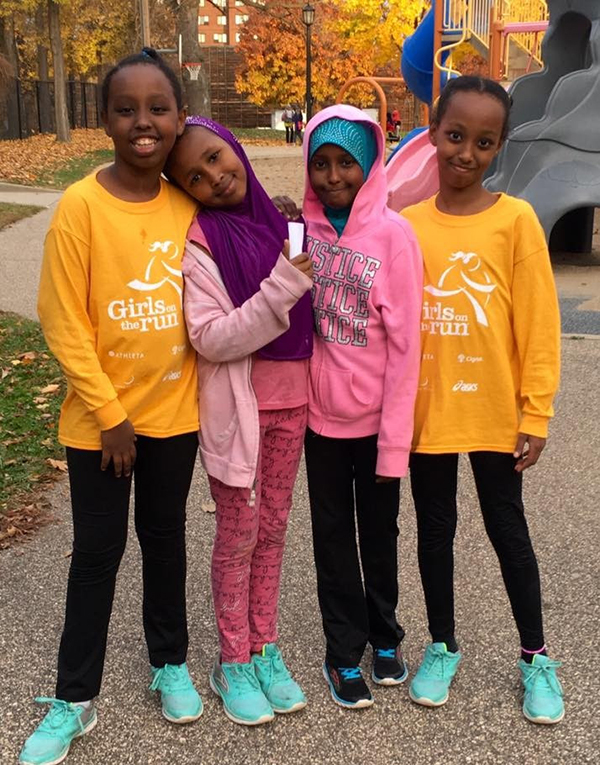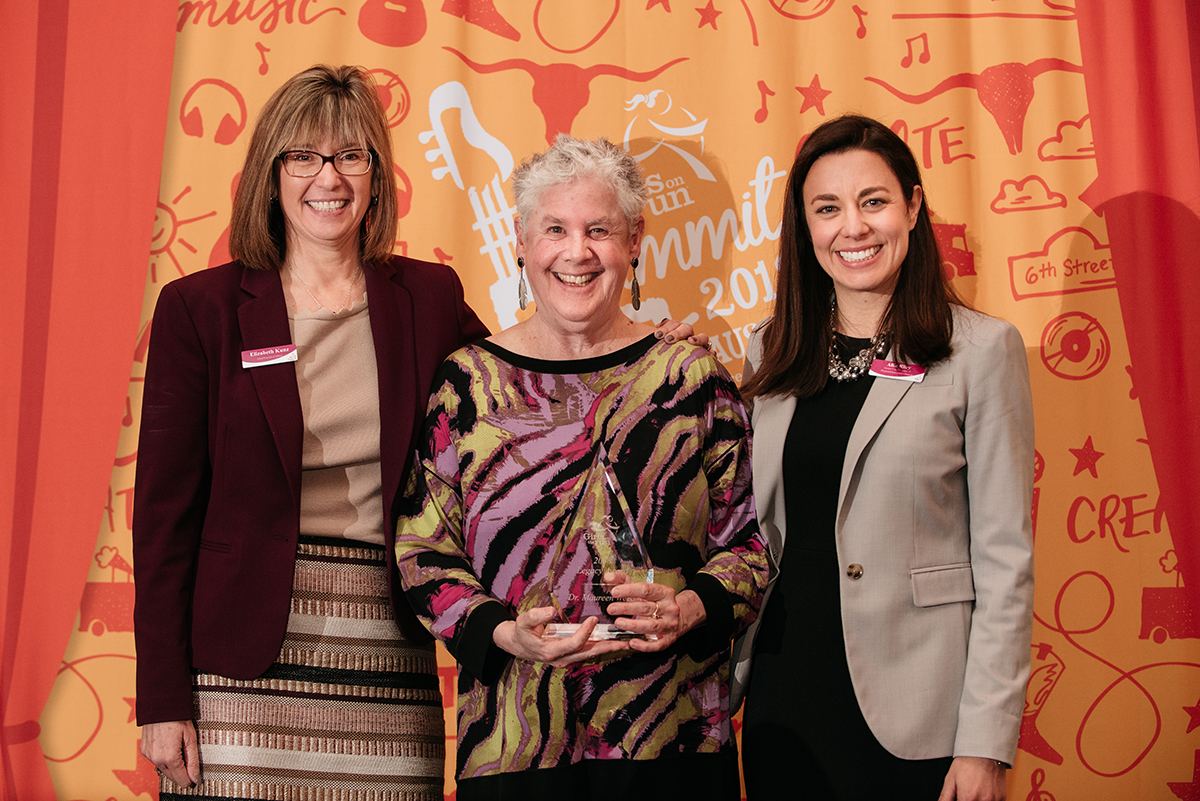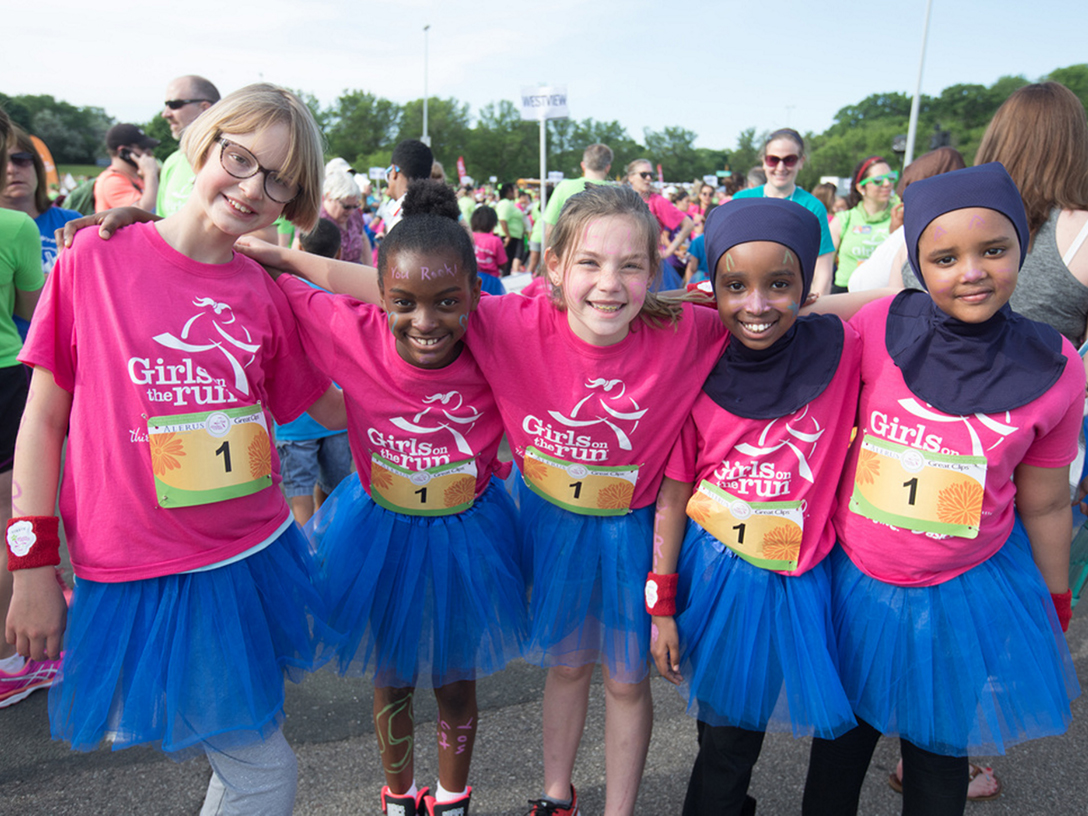Girls on the Run is a program that uses running and other physical activities as a platform for teaching girls life skills and healthy habits. But the organization wanted to know: Does it really work?
Kinesiology professor Maureen Weiss’s task was to find out. She led a study measuring how Girls on the Run impacts its young participants. Key to the program—and Weiss’s study—is the integration of running and life-skills lessons in every Girls on the Run activity.
“It’s an empowerment program using running as the vehicle for teaching life skills,” Weiss says.
Weiss has been studying youth development through sport and physical activity for more than 30 years. Her work has included dozens of projects, such as a longitudinal study of youth development through golf with The First Tee program. For this study, Weiss tracked how Girls on the Run meets the unique requirements of what is called positive youth development.
A true positive youth development program has several specific requirements: an intentional curriculum with opportunities for skill building, coaches trained in best practices, and a focus on creating a mastery motivational climate where youth strive for excellence within a supportive learning environment.
Often, it’s assumed that sport alone will drive positive developmental outcomes for youth. It’s fairly uncommon for a youth sport program to have a specific positive youth development curriculum like Girls on the Run does, according to Weiss.
Merging physical activity with teaching life skills
Every Girls on the Run session merges physical activity with lessons in the life-skills curriculum. For example, during a lesson about balance, the girls practice standing on one foot while discussing how unhealthy habits can throw them “off-balance.” Then the group moves on to their running workout, where they focus on finding a balance between physical activity and rest.

Weiss’s study focused on two questions. First, she wanted to know if Girls on the Run participants differed from a control group on life skills and developmental outcomes. Second, she measured whether the girls showed pre-to-post-season improvements on a variety of benchmarks and whether they retained those outcomes at a follow-up assessment.
The results were impressive. Girls on the Run participants scored higher in ability to manage emotions, resolve conflict, help others, and make decisions than their control-group peers. The study also showed significant improvements from pre- to post-season for girls in the program on confidence in physical activities, connection to peers and coaches, and level of physical activity. These improvements were retained at a follow-up assessment three months after the program’s end.
The strongest findings were for girls who started the season below average on confidence, connection, physical activity, and other characteristics. They showed dramatic gains from pre- to post-season and continued to increase at follow-up. For example, the least active girls at the start of the season increased their activity levels by more than 40 percent by season’s end and retained that level at follow-up.
Typically, says Weiss, levels from post-season to follow-up are expected to show similar scores but not an increase. But findings for girls who started the program below average, as well as for all girls, demonstrate the strong impact of Girls on the Run in promoting youth development.
“The bottom line here is that the girls who started out below the pre-season average—the girls that probably need a program like this the most—benefited the most from being physically active in this program,” says Weiss.
For all kids, physical activity levels start to decline at age 10. Gender-based social pressures make that decline steeper for young girls.
“This program is hoping to catch girls early and provide them with the life lessons they can use now and beyond,” says Weiss.
Experience inspires research
Weiss grew up in southern California and says she was lucky to have plenty of sports opportunities in her youth. Even with the advent of Title IX and increased opportunities for girls in athletics over the years, many girls still struggle to stay physically active through adolescence.
“Physical activity-based positive youth development programs are good for any kid,” says Weiss. “For girls, my passion is based on my own past experiences and my research over time.”

In January, Girls on the Run International presented Weiss with the Legacy Award, the organization’s highest honor, at an annual summit in Austin, Texas.
“None of this would have been possible without the expertise and experience that Dr. Weiss provided,” says Girls on the Run CEO Elizabeth Kunz. “I am, and will always remain, grateful for her leadership.”
Learn more about Maureen Weiss and Girls on the Run.
Story by Ellen Fee | Photos courtesy of Girls on the Run | Spring/Summer 2018
 Girls on the Run Twin Cities participants pose during a local race.
Girls on the Run Twin Cities participants pose during a local race.